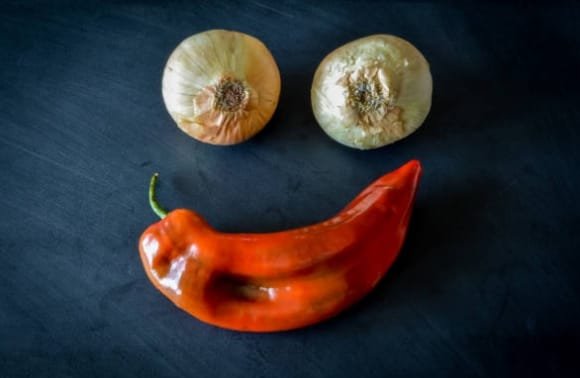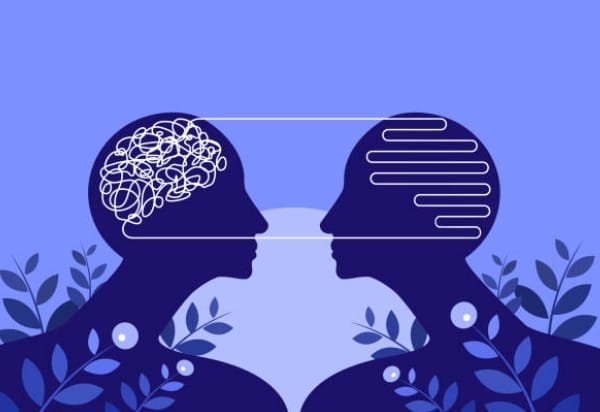
by admin | Jun 11, 2022 | Mind
How does isolation affect mental health
And What To Do In Order To Feel Better In the previous article, we talked about the different types of isolation and how they affect us. In this second part, though, we are focusing on some helpful tips about how to handle such a situation and what to do to feel better.
Because granted, just the word “isolation” itself brings a certain gloomy feeling with it for many people. This is why so many of us are searching for ways to reshape our perspective on the subject. If you look back, five years ago, no one would have found this an interesting topic, but now it’s one of the most searched things in Google.
Talk about how the times have changed, right?

We believe that everyone should try to find different ways to battle their negative viewpoint on isolation. Every single thing has a good and a bad side to it, and let’s face it – it’s nicer to focus on the good. None of us know how much longer this global state will last, and it’s always better to try and be positive and hopeful instead of somber and disheartened.
With that in mind, we hope you find our ideas interesting and consequently are able to look at isolation through a more positive lens. Let’s see what you can actually do to make yourself feel better and attach meaning to your days lived!
Have Hobbies

This is the best idea for similar situations. Hobbies are our way of escaping the reality around us, and they’re a never-ending source of inspiration. You can focus on some of the ones you already have and improve massively with time.
This way, isolation can be useful for you – it will have given you time to become a master of something you truly love. The other way to enjoy hobbies is to find new ones. We are sure there are countless activities you’ve wanted to try out but haven’t had the time to. This is your chance to shine!
Try some sort of art or craft or if that’s not your cup of tea – learn about something you’re interested in or find your new favorite book. You see, hobbies are sort of mini-universes – you can get lost in them pretty quickly and constantly have more and more things to explore.
Keep In Touch With Your Friends And Family

Modern technology allows us to be close to each other even if we’re miles away. We should take advantage of the miraculous time we’re living in and connect with our close friends and family. By doing this, we can remind ourselves we aren’t truly alone, making our days much happier.
The world can be a pretty friendly place if we reach out and if we strive to keep our relationships alive. Keep in mind that isolation is hard for everyone, so you are definitely helping the people you love the most by just being a good friend! And that is objectively one of the best things you can do in the world!
Stay Healthy And Relax

Your body will thank you for taking good care of it. Your mental state is linked to your physical one, so if you put in the work for one, the other will benefit as well. We know it can sometimes be hard to find the motivation to stay healthy in a situation like this, but small steps matter immensely.
Do some exercise, meditate, try to eat and sleep normally – these things will positively affect your mental health, which is crucial if you start feeling lonely. Doing all of that, don’t forget to relax, because none of this should be seen as a chore or some sort of negative activity.
It is simply your way of taking care of yourself.
Final Thoughts
Isolation is tricky. We all know that it’s not always easy to be alone. Today, more than ever, we can see why it’s so important to try our best to cope with a situation like this. It’s incredibly important to remind ourselves that there are some good sides to everything and focus on them.
This is why we choose to end this on a high note by asking you one open-ended question! What do you think is the next thing you’ll find and fall in love with, thanks to the free time you have?

by admin | Jun 11, 2022 | Health
Ankle Mobility exercises 101 | Part 1 – Anatomy & Functions
Ankle mobility is important in the gym for a better squat, but it also plays a role in our daily life. A strong and flexible ankle makes our body more functional. In 2 Parts we are going to share everything you should know from the anatomy of the ankle and its functions to some of our favorite mobility exercises.
Let’s start with the anatomy of the ankle.
Ankle Anatomy
An article from YPO explains it best.
The ankle joint connects the leg with the foot and has three main bones:
- Tibia (shin bone)
- Fibula (calf bone) – next to the shin bone
- Talus (ankle bone) – above the heel bone
The bony bumps (or protrusions) seen and felt on the ankle have their own names:
- The medial malleolus, formed by the tibia is found on the inside of your ankle
- The posterior malleolus, also formed by the tibia is found on the back of your ankle
- The lateral malleolus, formed by the fibula is found on the other aspect of the ankle
There are 33 joints in the ankle, one of the most important ones is the hinge joint, which is responsible for bending, extension, and flexion. In general, the joints of the ankle and the foot provide stability and support your body when walking and running.
The ankle also has soft tissues that support the bones.Some of them are:

- Cartilage – allows smooth movements in between the bones
- Ligaments – they connect bones to other bones providing stability to the joints
- Muscles – the foot has 20 muscles in total and some of them are located in the ankle:
- Anterior tibial muscle: it is responsible for the up and down movement of the foot
- Posterior tibial muscle: it supports the arch of the foot
- Peroneal tibial muscle: responsible for movement on the outside of the ankle.
- Extensors: they allow the ankle to raise the toes before stepping ahead.
- Flexors: they stabilize the toes against the ground
- Tendons – soft tissues that connect the muscles to the bones (Achilles tendon is the largest and the strongest one in our bodies )
- Bursae – these are small fluid-filled sacs, which reduce friction between tendons and bone or skin
After learning the ankle anatomy, let’s jump straight into the functions of this important joint.
Functions Of The Ankle

According to DrGlassDPM, The ankle joint has the primary responsibility of managing the body’s weight with or against the ground force.
The ankle joint has the largest deviation from the sagittal plane. That means that this joint is responsible for:
- Plantar Flexion – downward motion away from your foot (imagine how you press the gas pedal of a car)
- Dorsiflexion – backward bending and contracting of the foot
Open chain pronation at the ankle joint results in a foot with dorsiflexion abduction and averted. On the other side, open-chain supination is a result of the foot being plantarflexed, adducted, and inverted. These two movements are produced by the movement of the calcaneus and the remaining foot.
Closed chain motion is more complex since the majority of calcaneal motion is inhabited by the ground and all movement, which is produced by equal and opposite motion is also blocked by the ground.
Conclusion
We hope that this information is enough for you, in order to understand how the ankle works and what are its functions.
Now, if you want to get more practical, continue with our second part (insert link here), where we are breaking down how to build ankle mobility, and share with you some of our favorite exercises.
Thank you for reading this informative article and don’t forget to share it with a friend!

by admin | Jun 11, 2022 | Health
Ankle Mobility 101 | Part 2 – Mobility Exercises
After reading about the anatomy of the ankle in the first part (insert link here), now it’s time to get practical. In this second part, you will learn how important it is to have ankle mobility and how you can achieve it.
Ankle mobility is simply the flexibility of the ankle joint and all the muscles and tendons that surround it.
Poor ankle mobility can sometimes result in pain or discomfort in the joint when doing regular tasks like walking or running. It is caused by overtraining or the opposite – low physical activity. Now, let’s delve deeper into the importance of ankle mobility.
Why Ankle Mobility Is Important

Have you ever struggled to get your hips below parallel when squatting? Well, the reason for this might be a sign of poor ankle mobility. Lack of ankle mobility can result in arching your lumbar spine to compensate and putting more pressure on your lower back.
As you might guess, ankle mobility can hinder sports performance and even cause pain and discomfort. Having strong and flexible ankles is also required in our daily lives. When walking we put 5 times our body weight on our ankles. Furthermore, running puts even more pressure on the ankle joints – almost 13 times our weight.
As you can see, Dorsiflexion (moving your toes backward) and Plantar Flexion (pushing your toes forward) are involved in so many movements and it is extremely important that they are mobile. But how do you know how flexible your ankles are? Let’s find out in the next paragraph.
How You Can Test Your Ankle Mobility

You can test your ankle mobility in multiple ways but one of the easiest ones requires no equipment at all, so we will focus on it.
All you need is a wall.
- Kneel in front of the wall with one of your feet steady on the ground around 12-13 cm (5 inches) from the wall
- Your other foot should lean backward
- Now, try to touch the wall with your knee that is closer to the wall WITHOUT lifting your heel
If you can do that, then you have good ankle mobility. However, if you struggle to do it, then you might need some exercise…
Top 5 Best Ankle Mobility Exercises

- Eccentric Calf Raises
Lift up on a gym weight disc with both your calves. Now, raise one of your legs and start going down slowly with the other one. Hold down for 3-4 seconds and bend your knee forward before going up again.
Repeat for 3-4 sets x 12-15 reps.
- Goblet Squat With A Kettlebell
Grab a Kettlebell and get into a squat position. Put your elbows on your knees, so they point out at 11 and 1 on the clock. Bounce a little and get into the squat position again.
Repeat for 2-3 sets x 10-12 reps.
- Banded Ankle Leaning Forward
Put a resistance band around the bottom part of your ankle and attach it to something behind you. Start leaning forward without lifting your heel off the ground. Your other foot should lean backward as in the mobility test.
Repeat for 2-3 sets x 10-12 reps per foot.
- Lateral Tibia Glide
Lay on your back and bend one of your knees, so your foot is on the ground. Try to move the foot about 30 degrees left and right without lifting your toes or heels.
Repeat for 2-3 sets x 10 reps.
- Overhead Squat
Grab a small bar and lift it up as you are doing overhead press and get into a squatting position. By keeping your hands up, you put your torso in a more vertical position and it will be easier for you to go deep as you squat.
Repeat for 2-3 sets x 10 reps and keep the weight low.
Final Thoughts
We hope that these two parts helped you understand how the ankle works and how you can improve your ankle mobility.
Thank you for reading and don’t forget to share this article with a friend!

by admin | Jun 11, 2022 | Health
Facial Pareidolia
Faces Are Everywhere Around Us, Even In Inanimate Objects This complicated title might even seem a bit scary at first glance but it is actually the definition of something rather simple.
Have you ever seen the facade of a house or a weirdly shaped rock and thought, “Hey, this kind of looks like a face”? Well, it turns out that you don’t need to have an extremely vivid, childlike imagination in order to spot a face or an emotion in different items. In fact, some animals can do it too. This juxtaposition is exactly what facial pareidolia means, and it’s been around for centuries. Here we explain why and how this fun phenomenon occurs.
How It Works

As we mentioned before, the simplest explanation for facial pareidolia is the tendency to see faces where there are none. It occurs naturally mainly because our brains are prone to recognizing patterns.
When we see something in relatively the same proportions and spatial arrangement as two eyes and a mouth, it’s easy to imagine a face even if the object itself has nothing in common with one. After our brains have made this assumption, our second reaction is to determine the emotion and determination it has towards us or the environment.
Is the perceived face looking at us, is it happy, scared, or sad?
All these give us information on what we should do next and how we should react towards it or our common environment. If we should smile, look at something around us, or even run.
Our minds are so used to this process that we give inanimate objects direction of gaze and even feelings sometimes. It has been proven through different studies that the mechanisms we use when seeing a human face showing a specific emotion are the same as when we experience facial pareidolia.
And this is why these items can look scared, excited or even resemble a certain character we know of.
How It Happened

Facial pareidolia is a common condition related not only to our biology but our evolution. It dates back to so long ago that it’s highly likely some of the species we originated from had the same ability. This is because of the valuable information we can extract from other people’s faces.
If they’re scared, for example, it might be an indicator that we don’t know of something that’s a threat to us as well. If they’re angry, they might be hostile, if they’re kind, they might help us and so on and so forth. This is why from an evolutionary standpoint recognizing faces is so important that it would be better to be overly sensitive to them (like facial pareidolia) than not to be sensitive enough.
And although evolutionary cues often take premise on our reactions (angry ones mean run, scared ones – run faster, and so on), it’s been proven that our own recent experiences also have a massive influence on how we perceive facial expressions.
The specific connection we make with emotion and attractiveness is often based on what we saw and thought mere seconds ago. Studies were conducted to prove this, and they show that when we see a few happy faces in a row, it’s more likely to deem the next face happy as well.
If we see the same face after a row of angry ones, however, we wouldn’t have the same opinion about it. This conditioning is also true if it’s not a real person we’re seeing – our perception about paintings and faces we find in everyday items also changes based on what we saw last.
So it would appear evolution is not the only force at play here.
To Wrap It Up
The more you think about it, the cooler this phenomenon gets. From a practical perspective, it shows that our brains can do some pretty complicated processes on the spot. Not only that, but we recognize human emotion so well we can even give inanimate objects feelings.
From an evolutionary standpoint, facial pareidolia is proof that we are social creatures – if we weren’t, we wouldn’t need to understand or even register that someone else is like us. Based on such little fun phenomena that are a part of the human condition, we can certainly say that life really is fascinating. How often does this happen to you and what was the last face you saw? Comment below!

by admin | Jun 11, 2022 | Health
How To Manage Injuries | Part 1- Types of Injuries
We all know for a fact that doing regular training has numerous health benefits. However, most personal trainers that try to get you motivated to start working out, never really tell you about the possible downsides of training. Those are namely the injuries one may experience throughout their training process. Now, if you have been an active trainee for a while, you know the impact that even a small injury can have.
Usually, once a small injury is present, we tend to completely cut off training and sooner or later, nutrition gets ditched too. But the best part is that injuries can be managed and prevented, in a way that will not cease the momentum you’ve gathered up until the point of injury. In this article, we’ll go over common sports-related injuries, to discuss types of injuries, how to handle them & how to prevent them in the future.
Types Of Injuries

It is important to understand that there are different types of injuries, which in turn will be treated in different ways. However, when it comes to sports injuries, there are two main types defined by physical therapists – Acute injuries & Chronic injuries.
Acute injuries happen right away when the active components of your musculature and skeleton, are exposed to an amount of stress, greater than what they can handle. This type of injury is mostly to blame on falls, poor warm-up, bad exercise form, and often times, using excessively heavy training loads. The most common acute injuries are the following:
- Sprains/bruisings
- Fractures
- Dislocations
- Ruptures
- Cracked/broken bones
- Tears (muscle/ligament/tendons)
On the other hand, chronic injuries develop gradually in time as a result of consistent overexertion, poor recovery, wrong movement patterns, and often times, poor treatment of acute injuries.
As you may or may not know, when you take your muscles through a more intense workout, you technically create micro-trauma in the working tissues. In the period after the workout, the body aims to recover that micro-trauma to ultimately make all those tissues stronger and ready for bigger loads. However, there is a certain recovery threshold, due to the fact that intensity by nature is strenuous and requires time to recover from.
If you consistently go beyond that threshold, sooner or later the degenerative processes in those tissues will be greater than the regenerative processes, thus creating chronic injuries. Chronic injuries are generally harder to recover from and can in fact return in time, even after you have treated them.
Here are the most common chronic injuries:

- Tendonitis (Inflammation of certain tendons in the body)
- Bursitis (Affects the cushions of the joints, muscles, and bones called “bursae”)
- Myositis (inflammation of muscle tissue)
- Chondrosis (Breakdown of the cartilage)
- Tenoperiostitis (Inflammation of tendons/muscles at their insertion points)
Acute Injury Treatment – Do’s and Don’ts
Acute injuries may happen to anyone and if not taken care of, they can grow into chronic injuries. This is precisely why you should know how to manage acute injuries in a timely manner. The quicker you do so, the fewer complications will follow afterward, and the quicker you will recover. Generally, at a sudden onset of an injury, there are two primary things that will help you – Resting & Icing the area.
At the moment of acute injury, you have already surpassed the tissues’ limit and there is no more room to engage them in any activity. Putting the injured area to rest will allow all recovery processes to happen as quickly as possible, thus leading to quicker healing. If on the other hand, you decide to continue the physical activity that led to this, you are setting yourself up for a serious chronic injury.
With most acute injuries, there is an immediate onset swelling around the injured area. Applying an ice pack may help reduce pain and swelling, during the first days of the injury. It is recommended that you put an ice pack on the injured area for 10-20 minutes, 2-3 times a day during the first 48-72 hours after the injury has occurred.
Contrary to popular belief, compression on the injured area will not actually help with the initial swelling. Even more so, a tight compression may even make things worse. By using an elastic band and compressing the area, you limit the blood flow to the spot, thus slowing down the recovery processes.
As we mentioned, it is often that an injured individual will completely cease all training activity until the injury recovers completely. However, in most cases, this is in fact the worst thing you can do. The benefits of physical activity still remain, even if a certain body part is injured.
For example, if your knee is injured, nothing is stopping you from training your upper body. In doing so, you will promote blood circulation and thus favor hundreds of recovery processes in the body, allowing the injury to heal faster. In short – Rest the injured area and continue doing exercises that don’t aggravate it. Your body will take care of the rest.
To Wrap This Up
Though training offers a variety of benefits, there are also certain risks involved, which should be considered. Injuries are something that can bring your gathered momentum to a stop. This is the reason why you should definitely keep an eye on even the smallest pain and take care of them in time. In the second part of this article series, we are going to give you actionable tips you can use to manage & prevent chronic injuries, to ultimately bring a healthy body in your older years.
See you there!





















